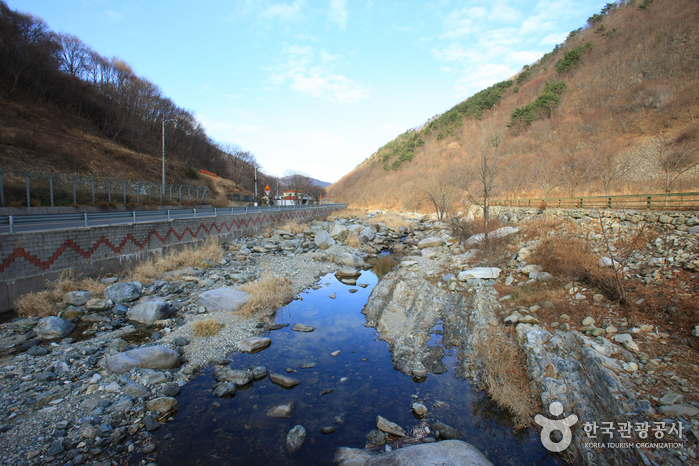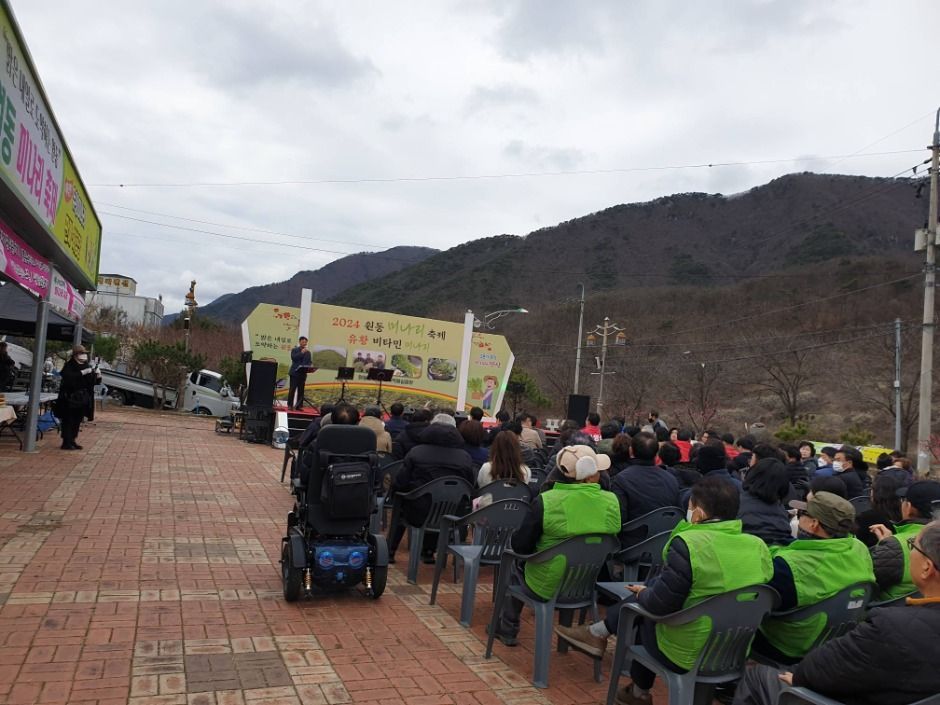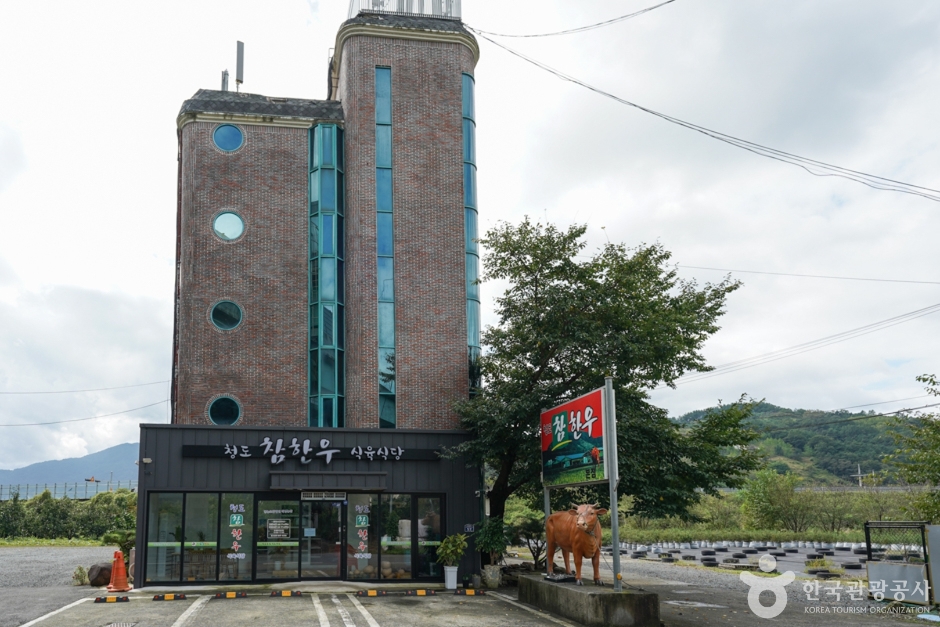Wondong Recreational Forest (원동자연휴양림)
18.9Km 2024-02-23
69 Neulbat-ro, Wondong-myeon, Yangsan-si, Gyeongsangnam-do
Wondong Recreational Forest is situated where Gajisan Mountain – often referred to as the Alps of Korea – meets Yeongchuksan Mountain. It is celebrated for its breathtaking landscape, which includes valleys, dense forests, and waterfalls. This forest provides an ideal setting for forest bathing, allowing visitors to immerse themselves in nature along the crystal-clear waters of the valley, surrounded by unique rock formations. Additionally, with the largest campground in Wondong, the Wondong Recreational Forest attracts numerous tourists seeking a serene camping experience amidst natural beauty.
Baenaegol Valley (배내골)
19.0Km 2021-04-03
Wondong-myeon, Yangsan-si, Gyeongsangnam-do
+82-55-382-4112
Baenaegol Valley is located at the heart of the mountainous region affectionately known as the Yeongnam Alps. The valley derives its name “Baenaegol,” meaning “the valley of pears,” from the wild pear trees that grow in large numbers along the valley.
The valley covers nearly 8 kilometers of land between the range connecting Sinbulsan Mountain and Yeongchuksan Mountain and the western range connecting Cheonhwangsan Mountain and Jaeyaksan Mountain in Miryang. It is a popular vacation destination in the summer. Also, many tourists come to drink the water containing acer mono sap, which is known to be produced in this region during the springtime.
Baenaegol Valley is just a short distance away from downtown Yangsan. The valley provides an opportunity to enjoy nature away from the hustle and bustle of the city center. The long valley is wedged between highlands, which results in at least two hours less of sunshine than other regions, so it feels cooler in the summer months. Strawberries are also widely grown in the area.
Wondongmyeon Minari Festival (원동면 미나리 축제)
19.3Km 2025-02-06
Yongdang-ri, Wondong-myeon, Yangsan-si, Gyeongsangnam-do
+82-55-382-5502
The Wondongmyeon Minari Festival celebrates the sulfur vitamin parsley, a local specialty of Wondong-myeon in Gyeongsangnam-do. A Minari (parsley) Town will be established after the festival to regulate the quality and price of parsley.
Cheongdo Chamhanwoo Meat Restaurant (청도참한우식육식당)
19.6Km 2024-02-13
21-1 Dongseobuk 14-gil, Masanhappo-gu, Changwon-si, Gyeongsangnam-do
054-373-9898
Situated close to Cheongdo Station, Cheongdo Chamhanwoo Meat Restaurant is renowned for its expertise in beef dishes. Its signature offering is the hanu special (Korean beef special), a delightful combination that includes galbitsal (grilled boneless galbi) and salchisal (chuck flap tail). The fresh meat is expertly grilled on a stone plate, enhancing its flavors. Pairing it with myeonginamul (a salad made with victory onion sourced from Ulleungdo Island) adds a unique and rich taste to the meal. Other highly recommended dishes at the restaurant are kkotdeungsim (ribeye) and yukhoe (beef tartare).
Birthplace of the16th President of Korea, Roh Moo-hyun (진영 봉하마을과 노무현 대통령 생가)
19.7Km 2022-12-29
129, Bongha-ro, Gimhae-si, Gyeongsangnam-do
+82-1688-0523
Bongha Village is located 4.5km to the east of Jinyeong-eup, on the foot-slopes of Bonghwasan mountain. It is a typical farming village, and its major produce is Jinyeong sweet persimmons and rice. Its name comes from the mound above it on Bonghwasan mountain, where in the past beacons were lit as a method of communication. Bonghwasan mountain is home to Bonghwasa temple and two famous valleys: Doduk (thief) valley on the east side, named because of the many thieves that used to operate in the area, and Yasi (fox) valley on the west side, which looks like a fox lying on its front, looking back at its tail.
Birthplace of the former President of Korea, Roh Moo-hyun
The birthplace of the former President of Korea, Roh Moo-hyun, is a brick house with a slate roof that consists of two small rooms and a kitchen. Although it is a shabby house, everything in it seems rare and precious to visitors. The earth, stones, and water, as well as household items, are popular with visitors. Some visitors even take stones and soil from the garden home with them in plastic bags, and some take water, believing that water from the ex-president’s birthplace is almost sacred.




 English
English
 한국어
한국어 日本語
日本語 中文(简体)
中文(简体) Deutsch
Deutsch Français
Français Español
Español Русский
Русский